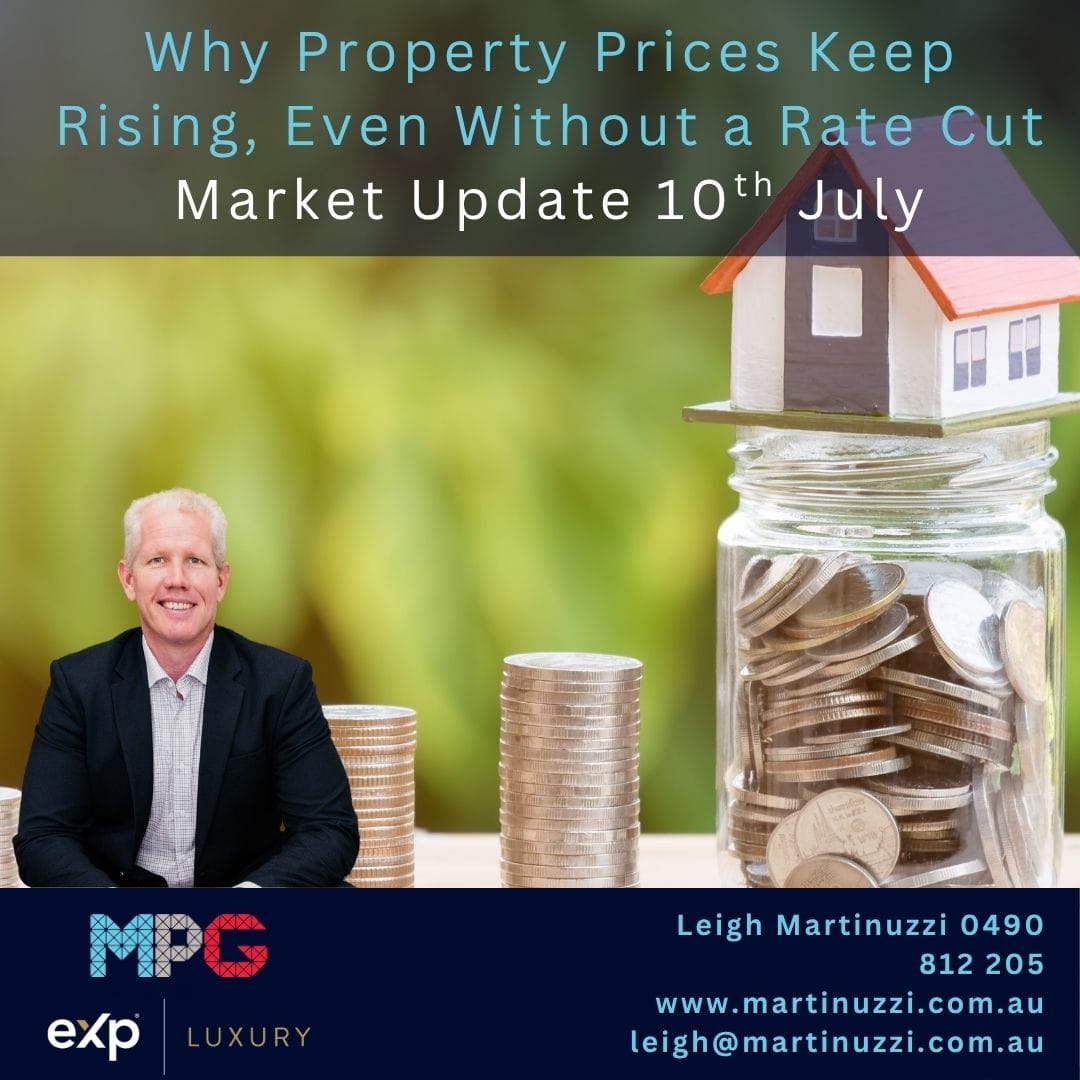The Southeast Queensland Housing Dilemma: A Closer Look
Real Estate Market Update with Leigh Martinuzzi MPG
In Southeast Queensland, a real estate puzzle has been unfolding, with a shortage of available homes for sale sending property prices rising again. The latest statistics for Australia reveal a staggering 25% decline in the total number of properties available for sale compared to the five-year average. As a result, prices are on the rise, and buyers are increasingly willing to meet sellers’ demands, provided the properties are not seriously overpriced or in need of extensive renovations.
Moreover, the dream of buying a brand-new home is becoming less attainable due to escalating costs. Whether it’s the expense of purchasing land and constructing a new home or the so-called “replacement value,” many are finding it challenging to justify the expenditure. Consequently, more people are turning to established homes, which may be older and require some modernization but often leave buyers with more money in their pockets.
Despite this trend, buyers remain cautious about overpaying for properties, given the uncertain economic climate. However, there’s a sense of reassurance as most people believe the Reserve Bank of Australia (RBA) will keep the cash rate steady at 4.1%, providing some stability in interest rates.
In the current market, properties that garner the most attention and sell quickly are those that are well-maintained, well-presented, and offer good value for money. Homes that are around 20 years old but have been meticulously renovated to near-new condition are selling for prices higher than the market average. The reasoning behind this phenomenon is that building a comparable home from scratch would cost considerably more. On the flip side, properties in need of maintenance or those that lack a polished finish struggle to attract the attention they potentially deserve, despite their underlying value.
Another factor influencing the market is the presence of cash buyers relocating to the Sunshine Coast from other parts of Australia. These buyers, having sold their properties in hotter, higher-priced markets, may have different perceptions of value compared to locals. For them, the additional cost is not a major concern if they find their dream home, and they are often willing to pay a premium for the perfect property.
One prevalent misconception contributing to the supply issue is the belief that developers are deliberately holding onto land (land banking). However, this is not the case. The primary problem lies in the lengthy approval processes and bureaucratic red tape that developers must navigate. Holding onto land doesn’t make financial sense when the rising value of land, estimated at 2 to 4% annually, is outweighed by the costs of maintenance and delayed development. According to expert Michael Matusik, there are approximately 59,000 lots in the pipeline for approval in South-East Queensland, with nearly half already in operational works. Given the demand of around 11,000 lots per year, this should theoretically be sufficient to meet market needs for 2.5 years. Once again, the shortage of supply is the root cause of rising property prices.
Lastly, let’s take a closer look at historical data. Property price peaks tend to occur approximately every four years. If this pattern continues, we can anticipate another peak in property prices, most likely around 2026. While some may argue that we haven’t reached the market’s bottom yet, current property prices across Australia suggest otherwise. The market appears to be on an upward trajectory, with the pace of increase potentially accelerating as time passes. Only time will tell how this story unfolds.






